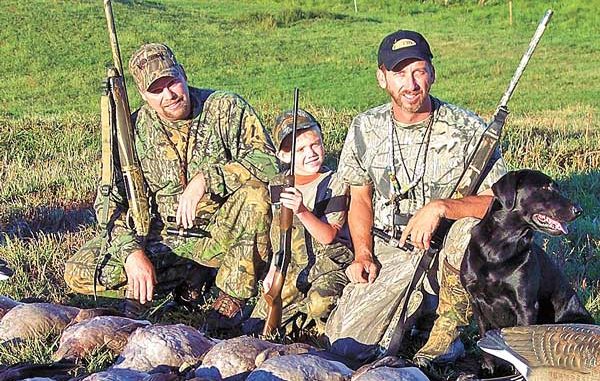
Hunting season kicks off this month with doves and geese. The action will be great; just don’t expect any white meat.
The sun was peeking over the horizon when three goose hunters became convinced they were about to get some company. They laid back in their coffin blinds, side-by-side on the half-acre sandbar as the flock of Canada geese winged its way down the deserted cove. When the lead goose was 20 yards from the decoys, Dwayne Padgett of Monks Corner and his buddies emerged from their blinds and cut loose on the Canadas, which were backpedaling in mid-air.
Meanwhile, in another area of the state, a group of hunters, less-concealed but no-less-dedicated, hunkered down between rolled hay bales, scanning the horizon for light gray streaks flying over the fresh-cut grain field that had been planted especially to attract doves. Long weeks of planning and planting were paying off as the sky began buzzing with doves coming in to feed. As the afternoon sky started to turn, more and more doves entered the field, and the thunder of shotgun fire covered the field.
For hunters itching to get started, two prospects stand out this month. The first is an early season for Canada geese that opens Sept. 1 for the entire month. Instituted nearly 10 years ago to take advantage of South Carolina’s ever-expanding population of resident geese, the season is statewide. Shooting hours are 30 minutes before sunrise until sunset, and the daily bag limit is a whopping 15 birds per hunter.
The other opportunity is dove season, which opens Sept. 5. The season is divided into three segments, the first of which lasts until Oct. 10. From Sept. 5-7, hunting begins at noon and lasts until sunset; it’s an all-day affair after Sept. 7. The daily bag limit for mourning doves is 15 birds.
What can hunters expect from the two “dark meat” seasons?
Padgett, an Avery pro staffer, owes much of his early-season success of geese to the time he puts into scouting. He divides his hunting venues into open grass and grain fields or reservoirs, and he wears out a lot of back roads and burns a lot of boat gas looking for concentrations of geese.
“I get a lot of help from farmers and bass anglers,” said Padgett. “Geese are creatures of habit; where they leave from at dark is almost always where they’ll come to the next morning. I’ll even go so far at times to stick a small flag in the last location I saw them at dark and be back … when daylight hits that spot the next morning.”
Since he hunts a lot of reservoirs across South Carolina, obtaining permission to hunt isn’t an issue. And getting permission on land isn’t as bad as most would think.
“I’ll go and introduce myself to the landowner and ask about what kind of farming he does,” Padgett said. “Usually, when I mention the geese, they’re pretty agreeable to us hunting them. Just make sure you understand how he wants you to enter and leave the fields and whether driving vehicles on the field is acceptable.
Once he’s decided on an area, Padgett generally relies on a layout blind for concealment. He likes Avery’s “Finisher” blind and the “Power Hunter.” He finds layout blinds will go a long way to matching the terrain, whether it’s a fresh-cut corn field or a sandbar on a lake.
“Both of these blinds come in camo or field khaki,” Padgett said “I like the field khaki because it blends with almost any background. We typically try to brush up our outlines with corn stalks, hay or fresh grass. We also tuck a few goose decoys in around us to help break up our outline. You don’t want to look like a big lump in a generally flat area.”
Decoys are the final touch. Padgett prefers full-body decoys, which give the scene a 3-D look. Full-body decoys are the order on land and sandbars with a few floaters thrown in on the water. The rest is in the presentation.
“Set up with the wind to your back or off to one side — definitely not in your face. That gives them too good a look at you while coming in,” he said. “We also don’t do a lot of calling. Geese are bunched up in family groups this time of year and aren’t real vocal.
“We get more response by using flags when we can see the birds far off. Wave them in, and then get in the blinds and take ’em.”
For years, hunting dove fields in September has been a time-honored tradition. Planning is the key; doves don’t just show up at random. Dove fields are planned and prepared well in advance. The doves however, are already here. The trick is getting them together in one place for a successful dove hunt.
“The vast majority of the doves that we harvest in South Carolina are resident birds,” said Billy Dukes, small-game project leader for the S.C. Department of Natural Resources. “This is something that’s been confirmed by our banding data and something we have known for a long time.”
Because doves are governed by federal regulations, it’s common to think of waves of birds moving down from the north, somewhat akin to the way waterfowl migrate down flyways to avoid cold weather. But in reality, the doves hunted this month are South Carolina born and bred.
“Our migratory doves typically don’t get here until at least Thanksgiving and often closer to Christmas, which is the January segment of the season,” Dukes said.
“We’ve now banded over 7,500 doves, and we’re killing the same doves we’re banding. Thirty other states … also band doves, and we only get a handful from other states that are recovered in South Carolina.”
Duke said that weather is the primary factor determining the number of doves in South Carolina. He said the biggest dove-killers in our state are thunderstorms.
“We’ve been collecting age-ratio data for about five years,” Dukes said. “and (we) can tell when these severe, pop-up thunderstorms occur during May, June, and July. We can tell when localized areas get 25 miles-per-hour winds or an inch of rain in an hour. When that type of weather occurs, doves have to start their nests all over again; whatever was in the nest is destroyed. It wipes out an entire nesting cycle — at least in that localized area.”
By collecting age-ratio data, biologists can actually sample the gaps in the population that are caused by severe weather.
Fortunately for doves and hunters alike, doves are prolific breeders, nesting as many times as possible every year. Dukes said nearly 80 percent of Palmetto State doves fledge between the first week of May and the end of July, but if conditions permit, they will go longer on each end of this period. The mating cycle may start as early as February and last well into October. An entire nesting cycle is only 27 days, and a typical pair of doves will clutch two eggs per cycle.
“They crank them out as fast as possible, but not all nests survive, and not all fledglings survive,” he said.
Admittedly, hunters take their toll on doves across the state, but harvest trends aren’t what you might expect. According to Dukes, the lion’s share of doves killed in South Carolina are taken during the first segment of the season. Breaking that down further, 55 percent of all doves killed are taken in the first week. By the end of the second week, 71 percent of the harvest is in the bag, and it’s almost 91 percent by the end of the first segment. After that, Dukes said SCDNR figures another four percent are taken around Thanksgiving and close to six percent more around Christmas. So, when migratory birds arrive in South Carolina, most hunters only see them from a deer stand.
“Opening Day is and always has been a traditional event,” Dukes said, “then add that doves are easier to attract in September, and the weather and lack of other game seasons pretty much make the dove opener and the early goose season the only games in town.”

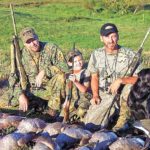
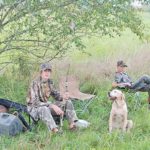
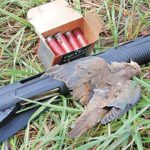
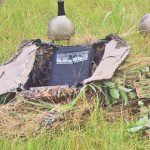
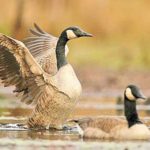



Be the first to comment